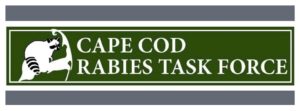 HYANNIS – If you throw your lower back out and decide to seek medical attention, don’t be surprised if you do not receive a prescription for a pain medication. It’s not just because the backlash from the opioid epidemic has made doctors leery of prescribing them. It also isn’t the appropriate treatment, according to pain specialist Kevin Kelly, MD, at The Cape Cod Hospital Pain Center.
HYANNIS – If you throw your lower back out and decide to seek medical attention, don’t be surprised if you do not receive a prescription for a pain medication. It’s not just because the backlash from the opioid epidemic has made doctors leery of prescribing them. It also isn’t the appropriate treatment, according to pain specialist Kevin Kelly, MD, at The Cape Cod Hospital Pain Center.
“Most of the studies have shown that for generalized back pain, without specific or mechanical diagnosis, opioids are not effective or useful and actually do more harm than good,” he explained.
In February, the American College of Physicians issued new guidelines for the treatment of lower back pain. The biggest change is that they now recommend non-pharmacological treatment as a first line of treatment because most patients with acute back pain (lasting less than four weeks) or subacute back pain (lasting four to 12 weeks) will improve over time regardless of treatment.
“You really need to look at each patient individually to come up with a treatment plan,” said Dr. Kelly. “If you look at each patient individually, I think the guidelines they have set are appropriately safe.”
Instead of pain medicine (including over the counter pain relievers), the new guidelines recommend the following therapies for those with acute or subacute back pain:
- Treatment with heat
- Massage
- Spinal manipulation by a chiropractor
- Acupuncture
- Exercise
- Yoga
- Tai Chi
- Mindfulness-based stress reduction
- Physical therapy
Those therapies should also be the first line of defense for those who suffer from chronic back pain lasting longer than 12 weeks.
Individual Treatment
For all pain patients, Dr. Kelly uses a Global Pain Scale which takes into account pain levels over a period of time. It also looks at how the pain is affecting lifestyle and functionality and uses a zero to 100 scale to determine level of pain. The scale also helps determine progress and which therapies are working best.
“Pain is very subjective,” he said. “There are genetic differences, cultural differences and socio-economic differences in how people perceive pan and how they manifest once they have pain.
For generalized acute back pain, the standard care is generally topical therapies, heat and ice, massage and physical therapy, he said.
“Back problems are very common,” Dr. Kelly said. “Probably the biggest problem with back pain is that many of as we get older we have more sedentary lifestyles and we allow that core muscle support of the stomach, lumbar and gluteal muscles to become lax and not provide the additional support that we need in strength.”
A lot of back injuries are due to strained muscles. In that case, Dr. Kelly recommends using heat for 10 minutes, followed by ice for 10 minutes, followed by another 10 minutes of heat. He also recommends one of the topical ointments like IcyHot, Ben Gay, Tiger Balm or a cream with capsicum.
“Now they have an Aspercreme which has four percent lidocaine in it and that anesthetic helps with muscle spasms as well,” he said.
Another new treatment that is readily available at local pharmacies is the Aleve TENS (transcutaneous electrical nerve stimulation) device. It provides electrical stimulation to relieve some of the muscle and nerve pain.
Falls or Accidents Are Different
While most acute back injuries will resolve on their own, a back injury from a fall or car accident should always be evaluated by a physician, Dr. Kelly said. People with acute back injuries are usually treated by their primary care physician or at urgent care centers or emergency centers. The patients Dr. Kelly sees are those with chronic back pain or radicular back pain where the pain travels down their legs or into their arms.
Treatment for back issues varies widely, he said. Those with neurological problems might need surgery. There are also neuropathic medicines in both the anti-epileptic and anti-depressant classes of medicine that can provide relief.
For people with disc protrusions or inflammation within the spinal canal, oral steroids are an option, but epidurals are one of the most common treatments because steroids and local anesthesia can be put directly into the injured area.
“In the lower back we tend to use a particulate steroid which will usually have a longevity of effect of about two to three weeks,” he said. “What we’re looking for in patients is to see that we are helping the inflammation to the point where the body is able to control it itself, so we’re looking for benefit beyond that time period.”























